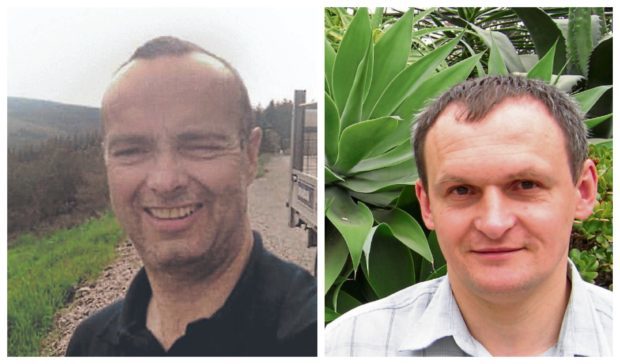A sheriff has ruled that a crash that claimed the lives of two lorry drivers was caused after one of them fell asleep at the wheel.
Farquhar Kennedy, 54, known as Frankie, was killed on the A90 Foveran to Belmedie road in Aberdeenshire, along with fellow HGV driver, Rimas Kuskys, 43, in September 2015.
Mr Kennedy was driving his Warburton’s lorry when it veered into the opposite lane and collided head-on with the vehicle driven by Mr Kuskys.
Mr Kennedy, from Aberdeen, was thrown from the cab of his lorry and landed on the road. Both men suffered multiple injuries and died at the scene.
A fatal accident inquiry into their deaths was held at Aberdeen Sheriff Court earlier this year.
Sheriff Graeme Napier has now concluded that “driver fatigue” on the part of Mr Kennedy was the cause of the crash. He said the deaths could have been avoided if Mr Kennedy had taken a break after becoming tired.
The inquiry heard witnesses had observed Mr Kennedy’s vehicle “veering from one side to the other” and “swerving on to the opposite side of the road by about a foot or two” in the minutes before the deadly collision.
In his written determination, Sheriff Napier said: “The evidence is clear that the collision was as a result of the vehicle driven by the deceased Kennedy veering on to the northbound lane of the single carriageway road, into the path of the vehicle being driven by Mr Kuskys, giving Mr Kuskys no opportunity to avoid a collision.
“On the basis of the evidence led if the collision was attributable to Mr Kennedy’s fatigue, as I am satisfied it was, he must have been aware of that fatigue for a reasonable distance and time before the accident.
“The evidence is that there was more than one fatigue related incident before the collision.
“Mr Kennedy could have pulled off the road or at least stopped his vehicle at some point before the collision; it would have been reasonable to expect him to do so given the warnings he had had, through the momentary losses of control, that he was not fully in control of the vehicle.
“Had he been able to keep his vehicle under proper control then the accident and the resulting deaths would not have occurred.
“Had he taken a sufficient break he would have been able to keep proper control of his vehicle and the accident and deaths flowing from them would have been avoided.”
The inquiry heard that Mr Kennedy had started his shift at 4am and the accident happened as he was on the way back to his depot at 1.18pm.
Mr Kuskys had moved to Fraserburgh from his Lithuanian home 11 years ago and had just celebrated his 12th wedding anniversary with his wife Rasa the weekend before he died.
